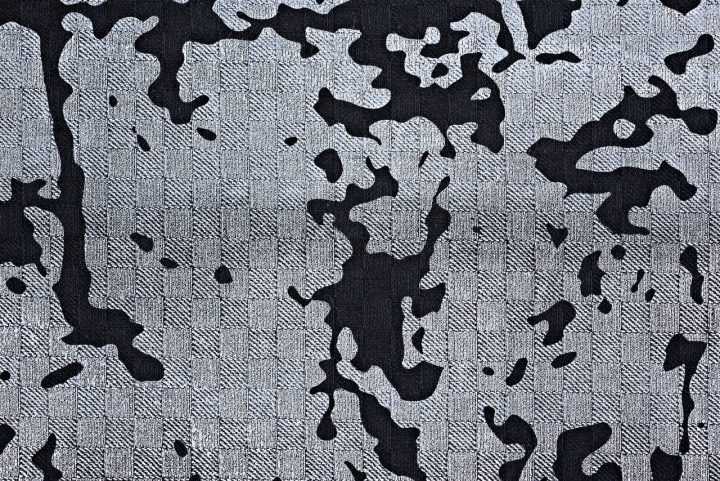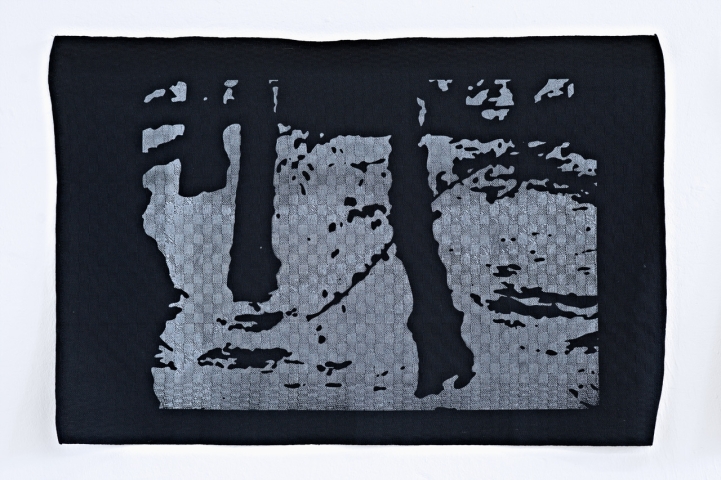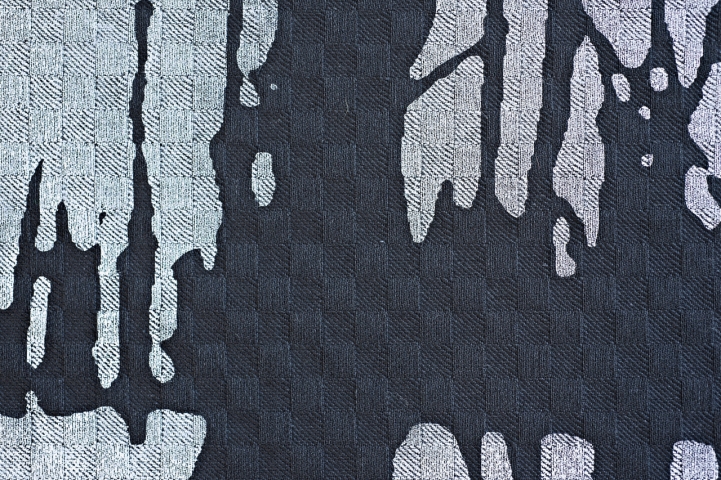Floods | Überschwemmungen




2017, installation
Silkscreen on six woven miner’s cloth, 79,5 × 51,5 cm
For this work, found photographs of floods were graphically reduced and transferred using screen printing onto miner’s towels. Miner’s towels are thickly woven cotton textiles, originally produced for mine workers, which they used to wrap their food or for keeping clean. Today these towels are especially popular as dish towels. The work was produced for an exhibition at Schloss Ringenberg—a moated castle in the Lower Rhein region, a historic center for the textile industry as well as for coal mining. Our perception today is increasingly desensitized to the motifs in the work—images of catastrophic states of exception—in two respects. On the one hand, with the ephemeral and ubiquitous flood of visuals today, photographic images lose their impact; on the other hand, in these times of climate change, the sight of alarming weather extremes is becoming all too familiar. Through a shift in the choice of image carrier and the connection of digital image and textile emerges however a subtle media-based disruption. Not only does the image become haptic and connect the crude materiality of the textile with the implicit wetness of the visuals, but the alienation of the image through reduction—like an optical illusion that appears to change between the real image and abstract impressions—also gives the starting image a formal beauty, linking the tragic with the aesthetic.
2017, Installation
Siebdruck auf sechs gewebten Grubentüchern, 79,5 × 51,5 cm
Für die Arbeit wurden gefundene Aufnahmen von Überschwemmungen grafisch reduziert und als Siebdrucke auf Grubentücher übertragen. Grubentücher sind dicht gewebte Baumwolltextilien, ursprünglich für Grubenarbeiter produziert, die sie etwa zum Einwickeln von Essen oder zur Reinigung benutzten. Heute sind Grubentücher vor allem als Geschirrtücher zum Abtrocknen beliebt. Die Arbeit wurde für eine Ausstellung im Schloss Ringenberg produziert – ein Wasserschloss am Niederrhein, historisch Zentrum von Textilindustrie wie auch Kohleabbau. Für die Motive der Arbeit, Fotografien von katastrophischen Ausnahmezuständen, ist unsere Wahrnehmung heute in doppelter Hinsicht zunehmend desensibilisiert. Einerseits verlieren fotografische Bilder in einer flüchtigen und allgegenwärtigen Bilderflut ihre mediale Kraft, andererseits ist der Anblick alarmierender Wetterextreme in Zeiten des Klimawandels allzu vertraut geworden. Durch die verschobene Bildträgerwahl, die Verbindung von digitaler Bildquelle und Textil, entsteht jedoch eine subtile mediale Irritation. Nicht nur wird das Bild haptisch und verbindet die grobe Stofflichkeit des Textils mit der impliziten Nässe des Abgebildeten. Die Verfremdung des Bildes durch Reduktion – wie ein Vexierbild, das zwischen dem eigentlichen Bild und abstrakten Eindrücken zu changieren scheint – kehrt darüber hinaus das Ausgangsbild in eine formale Schönheit, verbindet das Tragische mit dem Ästhetischen.
Text: Baptist Ortmann
